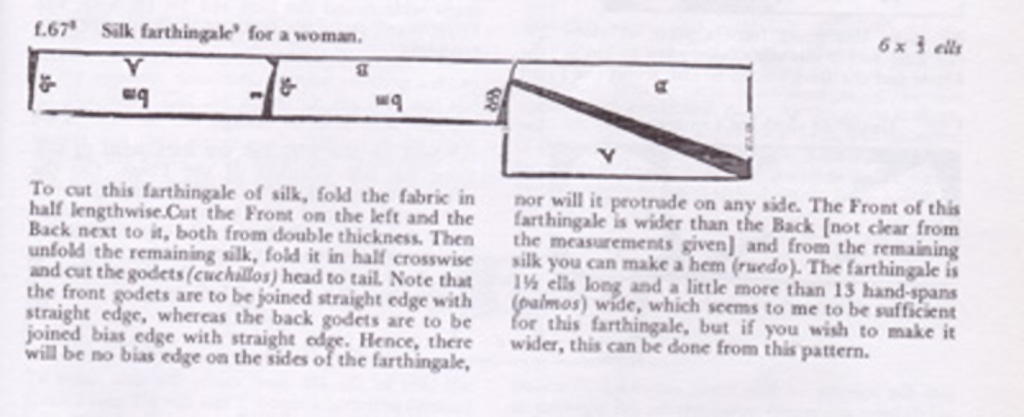Alcega's Farthingale (f.67)


Next we need to convert given measurements to inches.
|
bm = 1 1/2 ell = 49.5 inches t = 1/3 ell = 11 inches qqq = 3/4 ell = 24.75" sb = 5/6 ell = 27.5 inches |

|
This leads into the first confusing questions on the Alcega pattern for the farthingale. How do we use the numbers given on the pattern?
Let's just look at some numbers.
 |
 |
| Quarter view of the front | Full view of the front |
 |
 |
| Quarter view of the back | Full view of the back |
More to come.